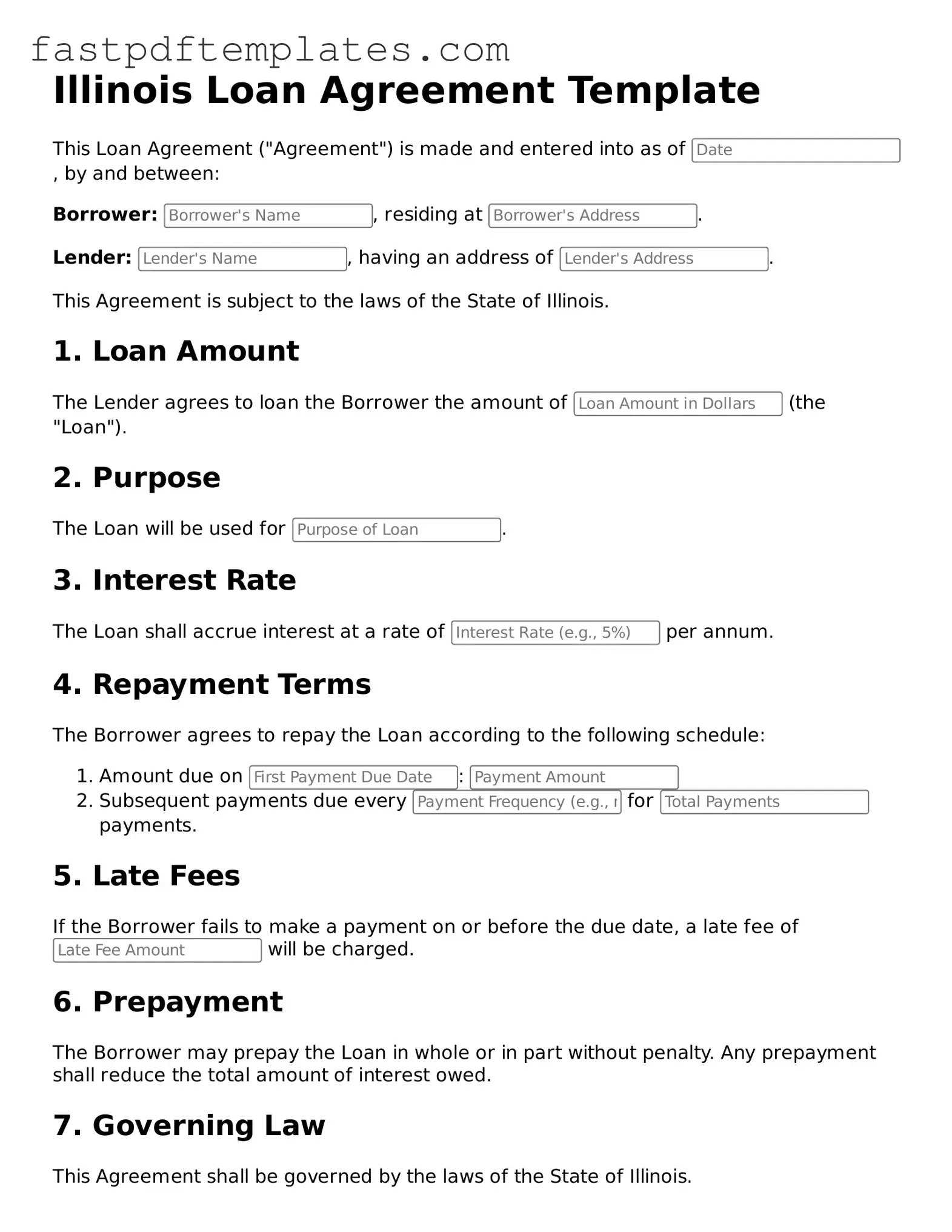The Illinois Loan Agreement form shares similarities with a promissory note. A promissory note is a written promise to pay a specific amount of money at a designated time or on demand. Both documents outline the terms of a loan, including the amount borrowed, interest rates, and repayment schedules. While the loan agreement may provide more detailed terms and conditions, the promissory note serves as a simpler, straightforward acknowledgment of the debt.
Another document that resembles the Illinois Loan Agreement is a security agreement. A security agreement outlines the terms under which collateral is provided to secure a loan. Similar to the loan agreement, it details the obligations of the borrower and the lender. Both documents aim to protect the lender’s interests in case of default, ensuring that they have a claim to the collateral specified in the security agreement.
The Illinois Loan Agreement is also comparable to a mortgage agreement. A mortgage agreement specifically relates to real estate transactions, where the property serves as collateral for the loan. Both documents include terms regarding the loan amount, interest rate, and repayment schedule. However, the mortgage agreement typically contains additional provisions related to property ownership and responsibilities, reflecting the nature of real estate financing.
A lease agreement is another document that shares some characteristics with the Illinois Loan Agreement. While primarily used for renting property, a lease agreement outlines the terms of payment and obligations between the landlord and tenant. Like a loan agreement, it specifies the duration of the agreement, payment amounts, and conditions for termination. Both documents establish a legal framework for financial transactions between parties.
A line of credit agreement also bears resemblance to the Illinois Loan Agreement. This document allows a borrower to access funds up to a specified limit, similar to how a loan agreement outlines the amount borrowed. Both agreements detail repayment terms and interest rates, although a line of credit may offer more flexibility in how funds are accessed and repaid over time.
The Illinois Loan Agreement can be compared to a personal loan agreement. This type of agreement specifies the terms of borrowing money for personal use, such as consolidating debt or financing a purchase. Both documents outline the loan amount, interest rate, and repayment schedule. The primary difference lies in the intended use of the funds, with personal loans often being unsecured.
A business loan agreement is similar to the Illinois Loan Agreement, particularly when used for financing business operations. This document outlines the terms of borrowing for business purposes, including interest rates and repayment schedules. Both agreements serve to formalize the lender-borrower relationship, ensuring clarity on the obligations and expectations of both parties.
A credit card agreement also shares elements with the Illinois Loan Agreement. This document outlines the terms under which a credit card issuer extends credit to a cardholder. Both agreements specify interest rates, payment terms, and fees. However, credit card agreements often include more variable terms, reflecting the revolving nature of credit card debt.
A debt settlement agreement is another document that can be likened to the Illinois Loan Agreement. This agreement outlines the terms under which a debtor agrees to settle a debt for less than the full amount owed. Both documents detail the obligations of the parties involved, although a debt settlement agreement typically involves negotiation and compromise, while a loan agreement establishes clear terms for repayment.
Lastly, a forbearance agreement can be compared to the Illinois Loan Agreement. This document allows a borrower to temporarily postpone payments on a loan, often due to financial hardship. Both agreements address the terms of repayment, including any adjustments to the repayment schedule. The forbearance agreement serves as a way to provide relief to the borrower while maintaining the lender’s rights to the debt.
